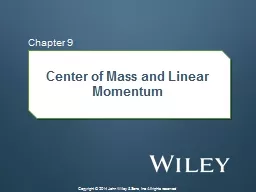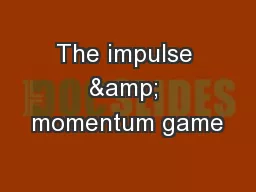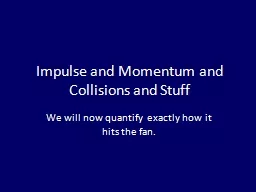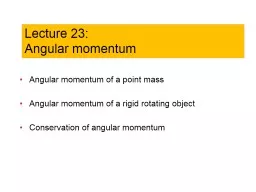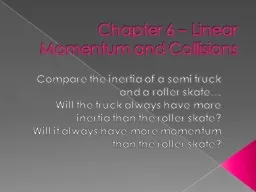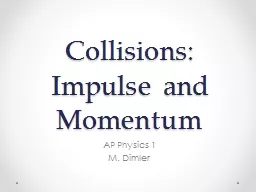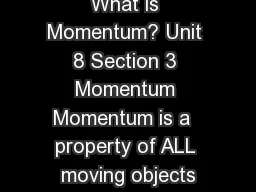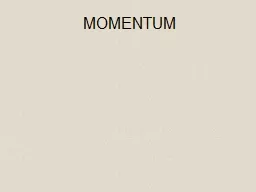PPT-Center of Mass and Linear Momentum
Author : yoshiko-marsland | Published Date : 2017-08-17
Chapter 9 Copyright 2014 John Wiley amp Sons Inc All rights reserved 91 Center of Mass Motion of rotating objects is complicated T here is a special point for
Presentation Embed Code
Download Presentation
Download Presentation The PPT/PDF document "Center of Mass and Linear Momentum" is the property of its rightful owner. Permission is granted to download and print the materials on this website for personal, non-commercial use only, and to display it on your personal computer provided you do not modify the materials and that you retain all copyright notices contained in the materials. By downloading content from our website, you accept the terms of this agreement.
Center of Mass and Linear Momentum: Transcript
Download Rules Of Document
"Center of Mass and Linear Momentum"The content belongs to its owner. You may download and print it for personal use, without modification, and keep all copyright notices. By downloading, you agree to these terms.
Related Documents

